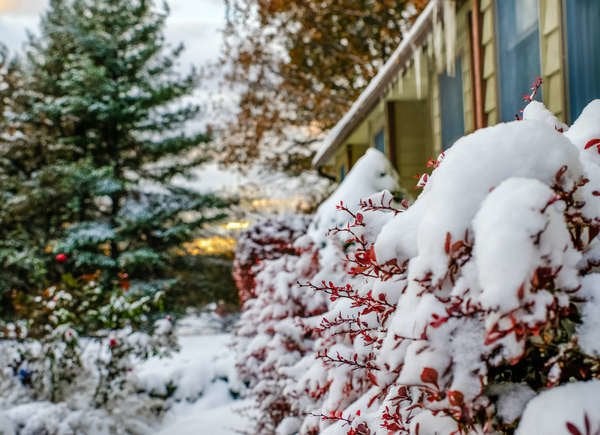We may earn revenue from the products available on this page and participate in affiliate programs. Learn More ›
There’s no reason that your winter landscape needs to look dry and dreary. There are lots of plants that can add beautiful contrast and visual interest to a winter garden. Plus, not only can they boost your curb appeal, but outdoor winter plants contribute to biodiversity, which can strengthen the local ecosystem and provide valuable food sources and nesting sites for wildlife. Here, learn about 20 winter plants that you can use to enhance your yard throughout the cold months and beyond.
1. Blue Ice Bog Rosemary (Andromeda polifolia ‘Blue Ice’)
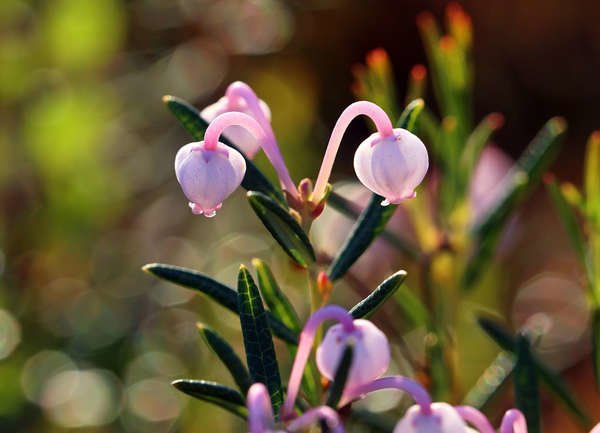
Blue Ice bog rosemary’s unique silvery-blue foliage looks good in every season, but this evergreen ground cover also delights with a shock of pink bell-shaped blooms in early spring. Perfect for rock gardens and moist soils, it will attract birds and bring visual interest to the yard all year. This beauty thrives in zones 2 through 6.
RELATED: 20 Evergreen Shrubs to Beautify Your Garden Year-Round
2. Carsten’s Wintergold Mugo Pine (Pinus mugo ‘Carsten’s Wintergold’)
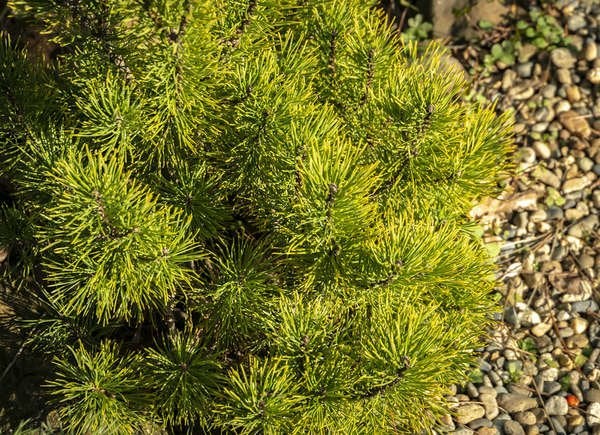
This dwarf pine variety turns from green to gold when cold weather arrives. In fact, the colder the climate, the more intense its color becomes. Deer-resistant and easy to care for, this shrub will look beautiful all year when planted in zones 2 through 7.
3. Weeping Norway Spruce (Picea abies ‘Pendula’)
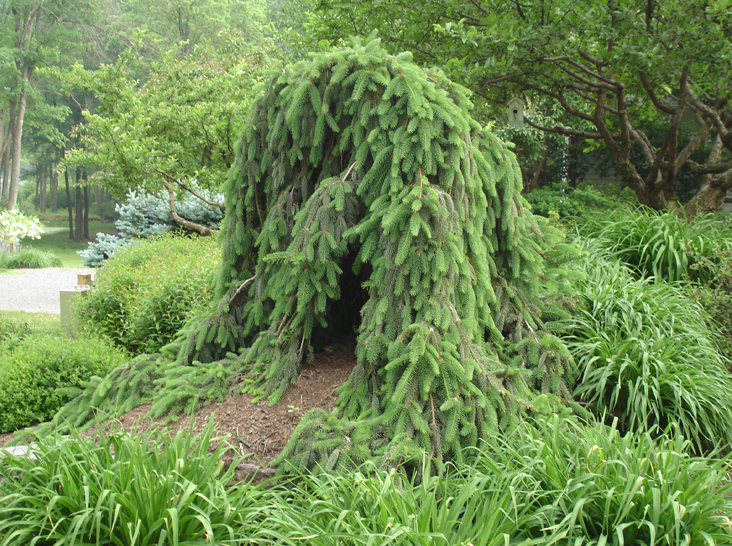
Many weeping ornamentals lose their leaves in cold weather, but not the weeping Norway spruce. With its unusual shape and showy cones, this evergreen makes a great accent in the garden and provides rich green in all four seasons. Plant it in zones 3 through 7 to keep it happy.
RELATED: The 15 Best Trees for Any Backyard
4. Tiny Buttons Stonecrop (Sedum hispanicum var.)
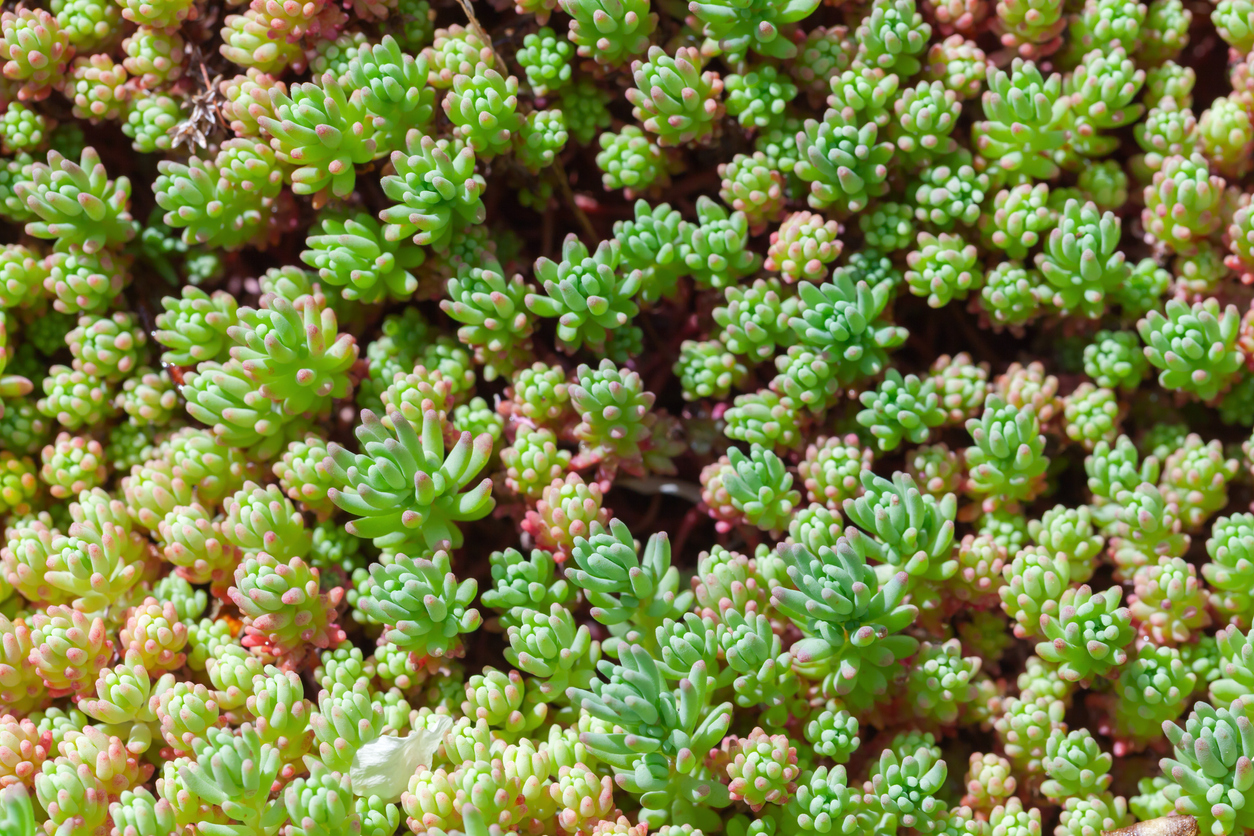
This evergreen succulent creates a lush and attractive carpet that thrives year-round when planted in zones 5 through 9. Most boast tiny flowers that attract butterflies in summer, and the foliage of Pink Form and Purple Form can take on reddish to purple hues in colder months. Easy to care for in full sun, this little wonder packs a lot of life in its compact height but excellent spread. Once established after a season or two, it is xeric.
5. Siberian Carpet Cypress (Microbiota decussata)

For evergreen ground cover in cooler climates, try one of the Siberian carpet cypress varieties. These short and colorful shrubs turn a coppery purple in winter in zones 3 through 7, greening up again when warmer weather arrives in spring. They’re also horizontal spreaders that make them ideal for lining borders and walkways with attractive foliage.
RELATED: The Invincible Yard: 25 Ideas for Lazy Landscaping
6. Frosty Fire Dianthus (Dianthus × allwoodii ‘Frosty Fire’)
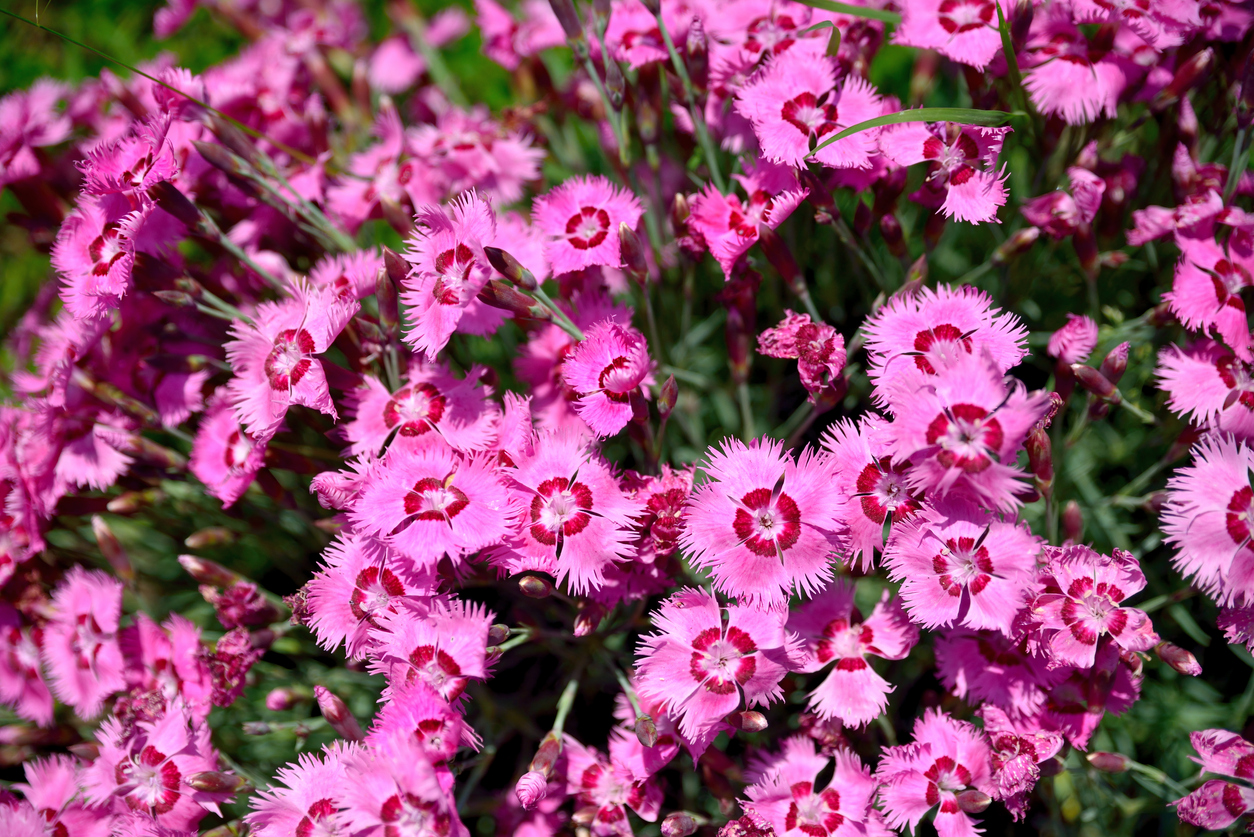
This ground-hugging variety of dianthus is evergreen and cold hardy in zones 3 through 8. Its gray-green foliage erupts in summer with flowers, making it a wonderful filler both in the garden or in pots, so feel free to grow it in a container and overwinter it indoors in colder zones. The flowers are also fragrant, adding a clove-like scent to the garden.
7. Dwarf Globe Blue Spruce (Picea pungens ‘Globosa’)
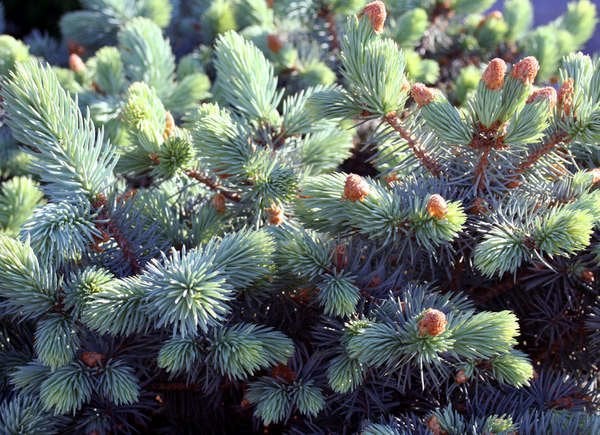
If you’re looking for a distinctive shade of evergreen color, dwarf globe blue spruce delivers. Hardy in zones 2 through 8, this densely branched conifer has blue needles that become more brilliant in summer. It makes a wonderful low (3- to 5-foot) hedge, but it’s even more outstanding when planted in combination with different species.
RELATED: 11 Living Fences That Look Better Than Chain Link
8. Pink Pussytoes (Antennaria dioica ‘Rubra’)
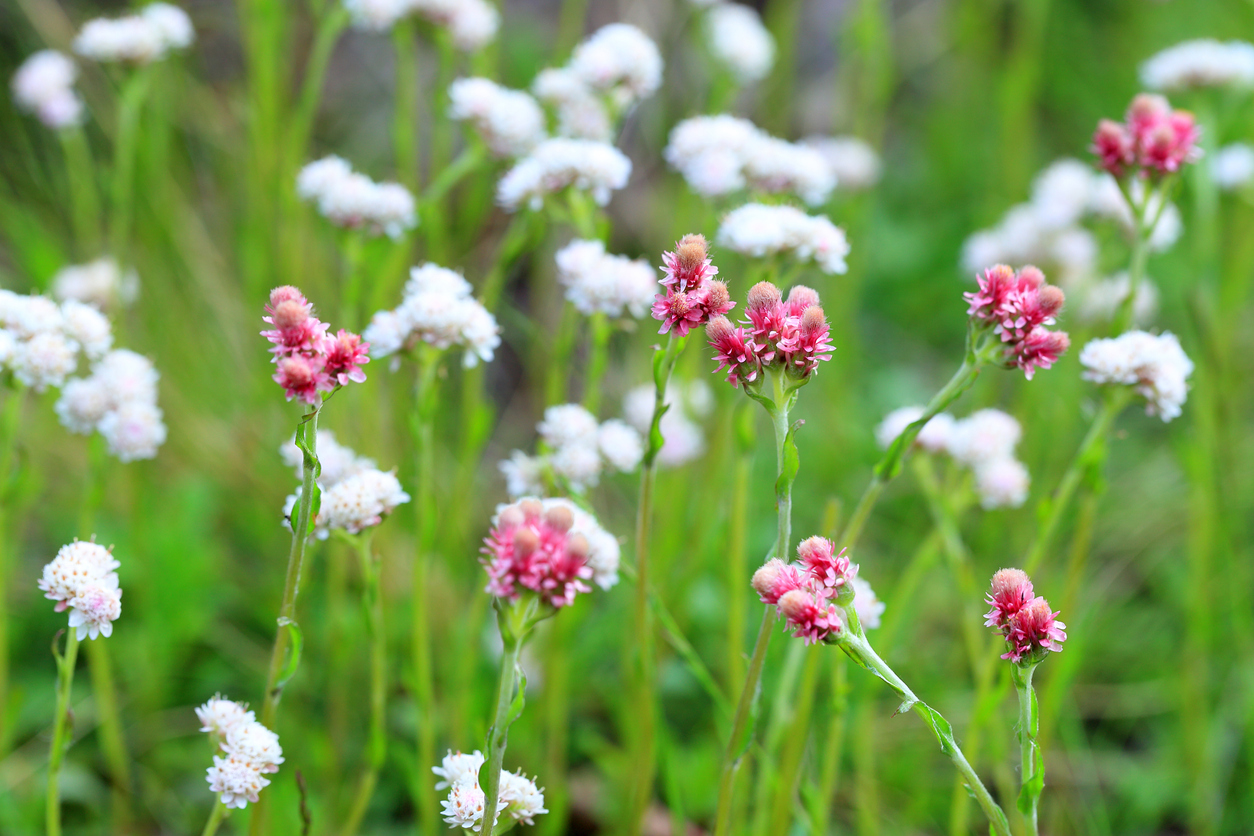
Adapted to zones 2 through 9, pink pussytoe plants provide an evergreen mat of tiny silver-gray leaves. In late spring, the plant spikes deep pink, fuzzy flowers. It’s a slow grower and requires little water once established, so this cold-hardy beauty is a breeze to care for in any season.
9. Snowdrops (Galanthus nivalis)

Snowdrop bulbs are happiest with cold or moderate winters, and among favorite winter-flowering plants. Place them where you can enjoy their delicate flowers in the fall and throughout the cold months, even during snow. Come spring, they’ll go dormant. These winter beauties grow best in zones 3 to 8.
RELATED: Solved! 8 Flowers Sure to Bloom in Winter
10. Christmas Rose (Helleborus niger)
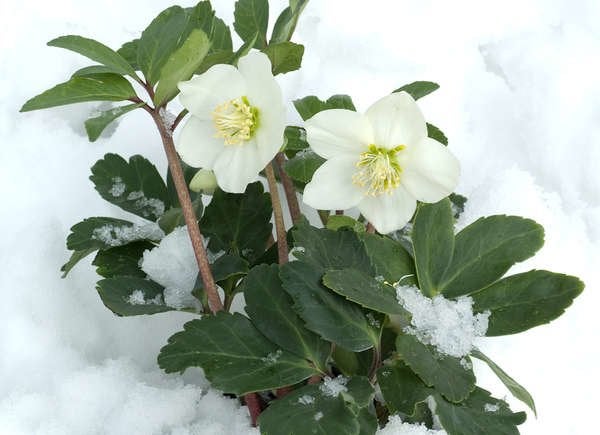
Christmas rose, a variety of hellebore, is a pest-resistant evergreen perennial. It also provides valuable nectar for early pollinators, like the rusty patched bumblebee, who are seeking blooms in late winter or early spring. Find it a shady location in zones 3 through 8 with space to grow, and soon you’ll enjoy its white winter blooms in the warmer end of their growing range and early spring where colder.
11. Winter Jasmine (Jasminum nudiflorum)
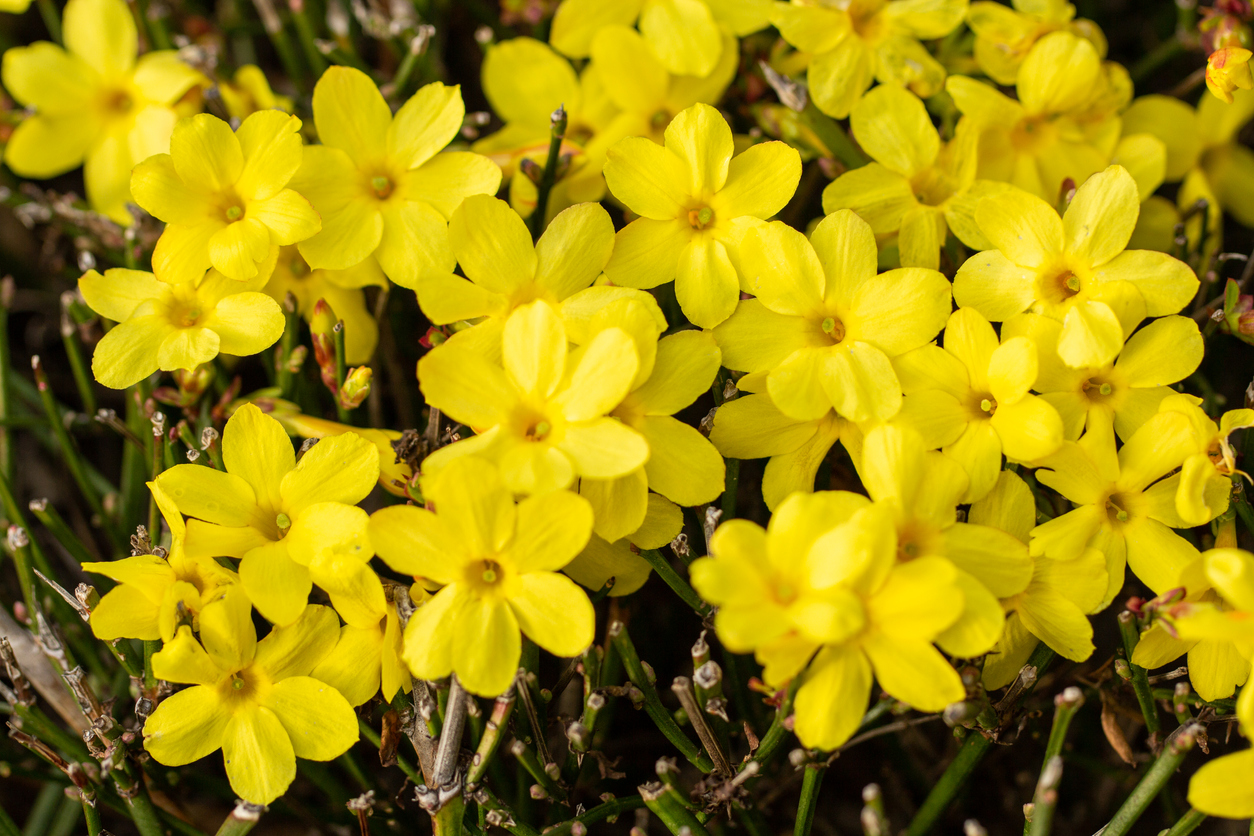
Winter jasmine is a vining shrub that will treat you with bursts of fragrant yellow flowers between late winter and early spring; the plant’s flowers often are the first to appear as winter wraps up. But even when not in bloom, this plant’s large arching stems will provide plenty of visual interest to the garden. Hardy and easy to grow, winter jasmine is happiest in zones 6 to 10.
RELATED: 20 Perennials to Plant in the Fall for Beautiful Spring Flowers
12. Witch Hazel (Hamamelis virginiana)
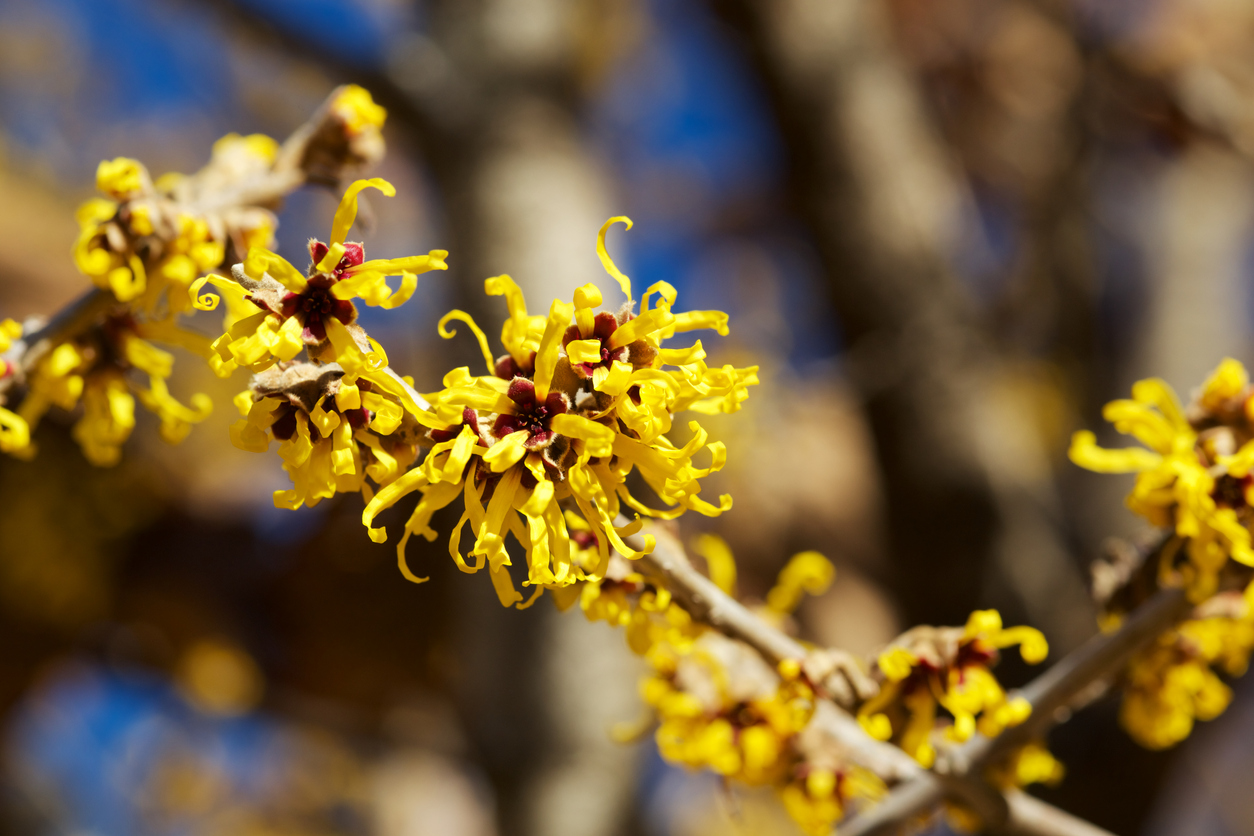
Known for its medicinal properties, witch hazel is often used in cosmetics and lotions, since it is reported to reduce inflammation and soothe certain skin irritations. It’s also a great choice for a winter garden, thanks to its fragrant yellow-to-red flowers that can bloom even in snowy weather. This adaptable plant thrives in zones 3 to 8.
13. Snowberry (Symphoricarpos albus)
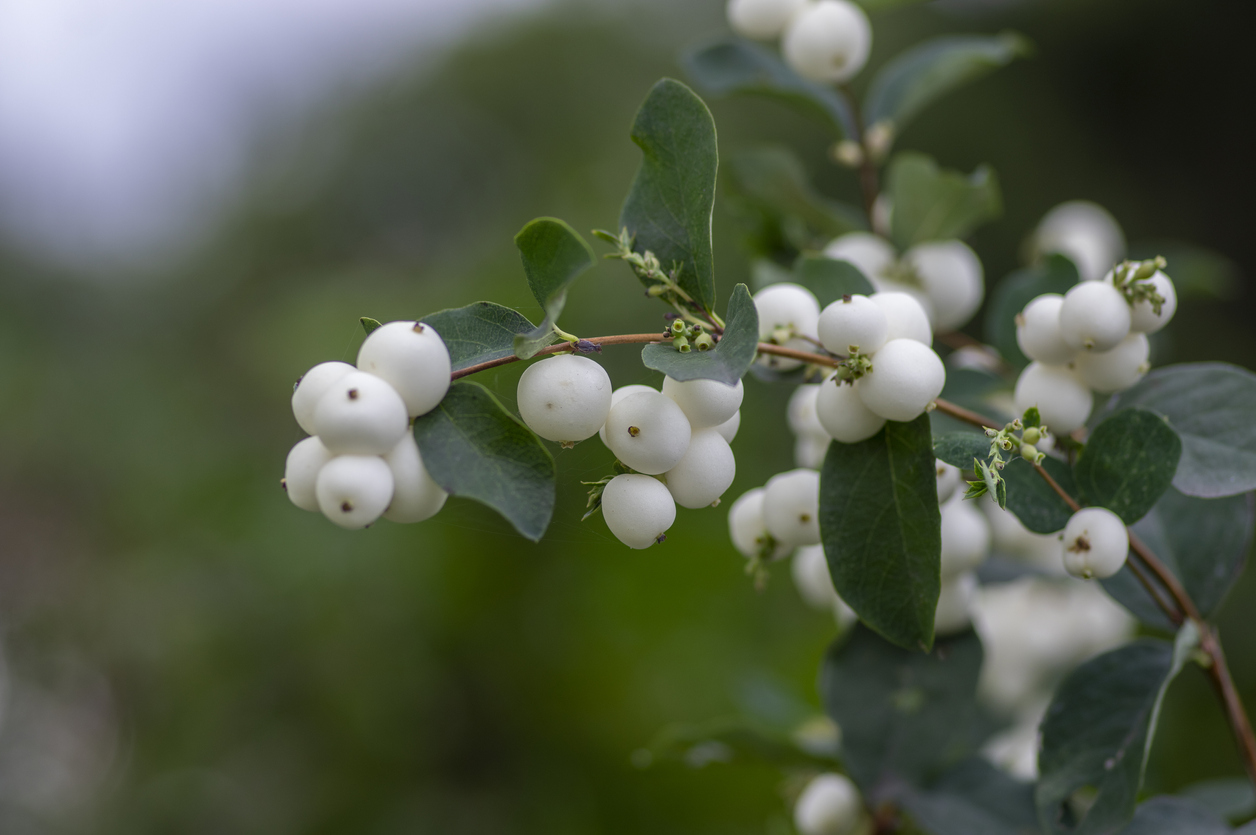
Named for its small clusters of white berries that put on a show throughout the winter and give way to little white flowers in the spring, snowberry plants provide a valuable food source for birds during the cold winter months. When planted in its hardiness zones 3 through 7, this plant will spread as a dense thicket, so it’s a great choice for borders or hedges.
RELATED: 50 Plants That Thrive in Any Yard
14. Sweet Box (Sarcococca hookeriana var. humilis)
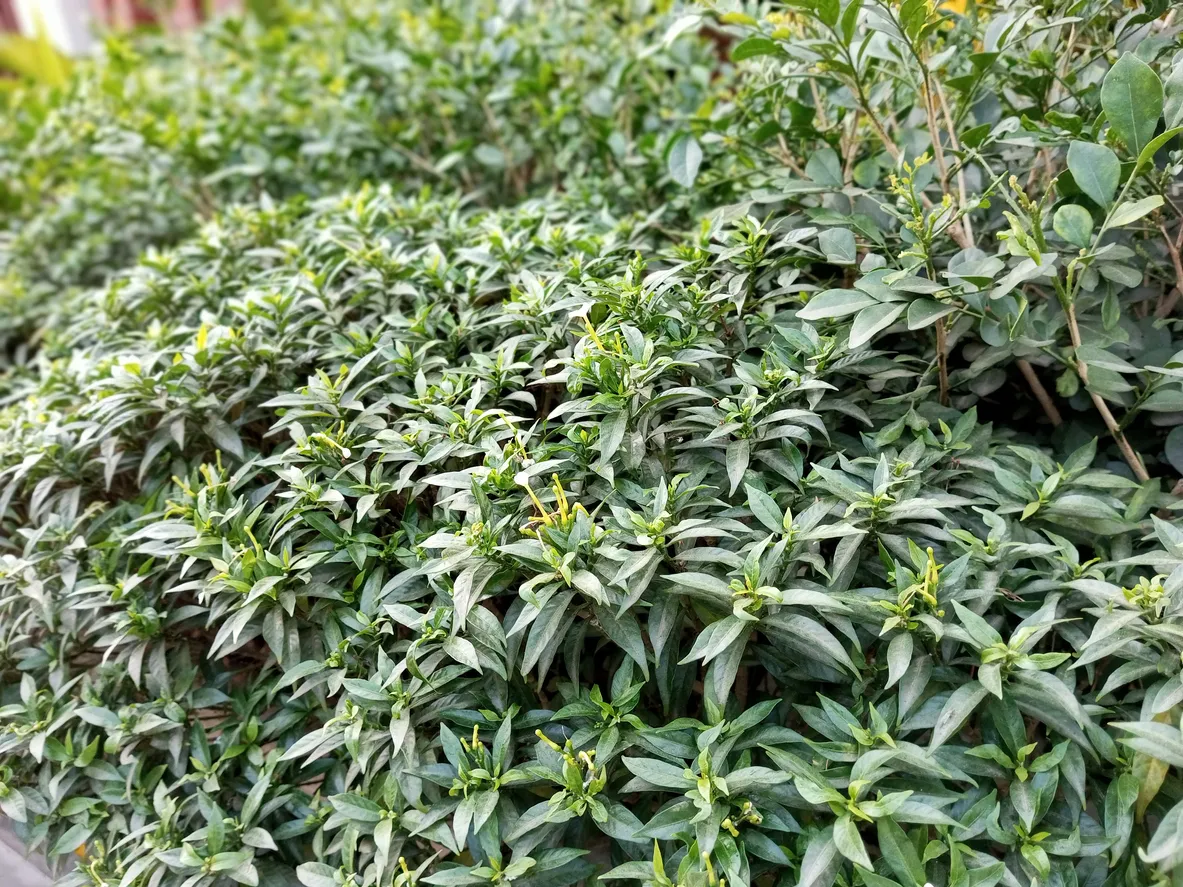
Featuring dark green glossy leaves, sweet box plants are shade-loving evergreen shrubs that boast small fragrant flowers that bloom in late winter and early spring. Once the flowers disappear, little black fruits will appear in their wake. Preferring partial to full shade, sweet box plants do best in zones 6 to 8 and are among excellent year-round plants to add interest to the garden.
15. Winter Heath (Erica carnea)
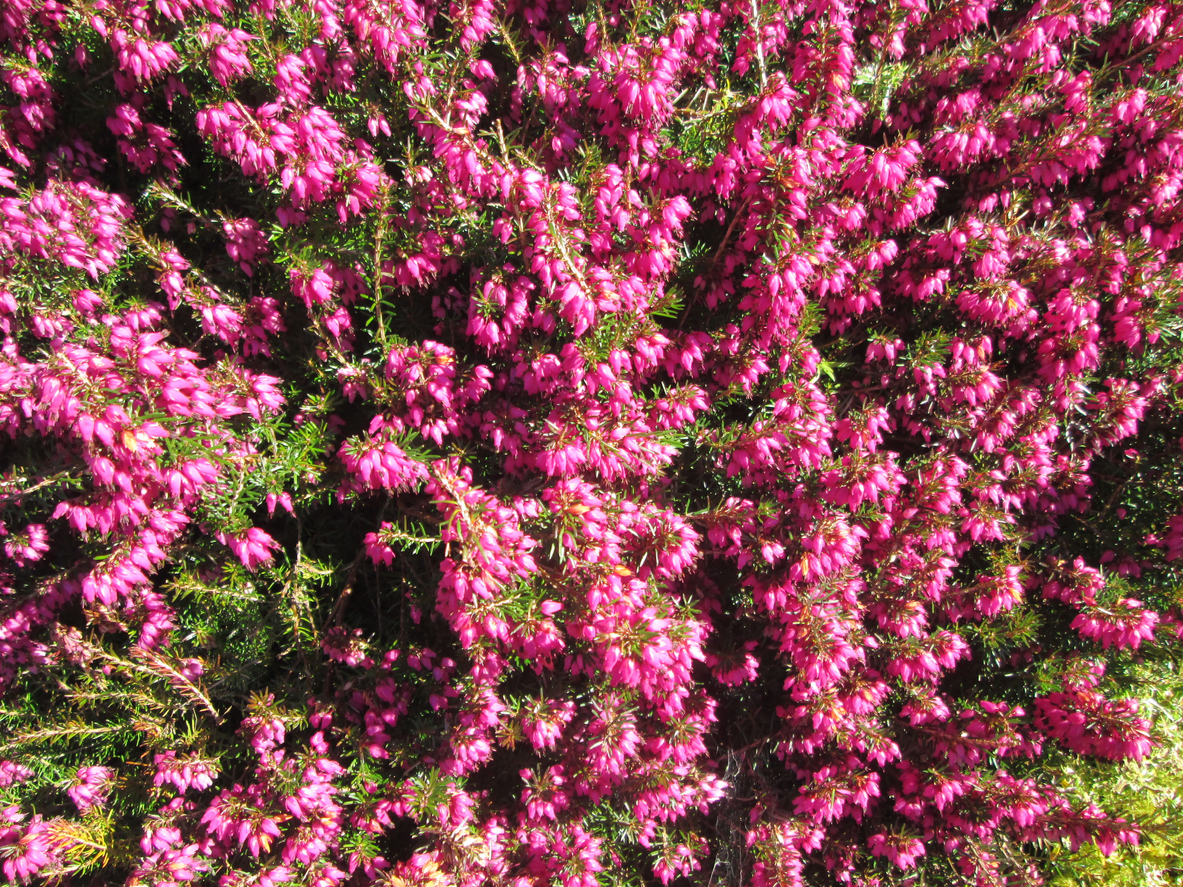
For a vibrant splash of color, plant winter heath in your yard, which will repay you with abundant tiny pink winter flowers that bloom in late winter through early spring. The colorful winter shrub is hardy in zones 7 to 9, and it’s commonly used as ground cover, forming a dense mat. Prune it right after it finishes flowering in the spring to prevent leafless stems and keep it looking great all year.
RELATED: How To: Propagate Succulents
16. American Cranberry Bush (Viburnum opulus var. americanum)
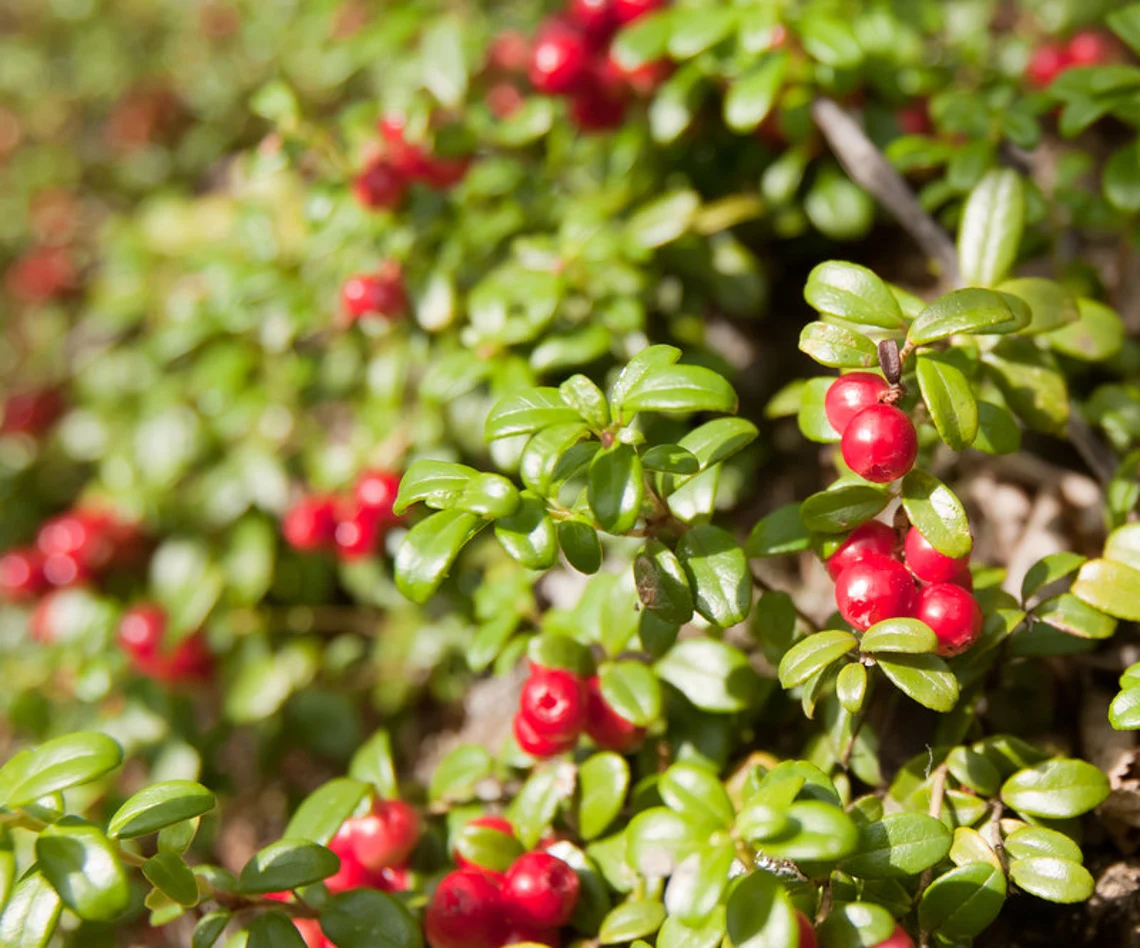
This deciduous shrub’s large size, typically spanning 8 to 12 feet tall and wide, makes for a show-stopping garden accent. Throughout the winter, the American cranberry bush will burst with vibrant red berries, which are edible but aren’t very tasty when eaten raw. However, they can make for a yummy jam when mixed with sugar. Hardy in zones 2 through 7, the shrub’s winter berries give way to fragrant white flowers beginning in spring and persisting through mid summer.
17. Russian Sage (Salvia yangii)
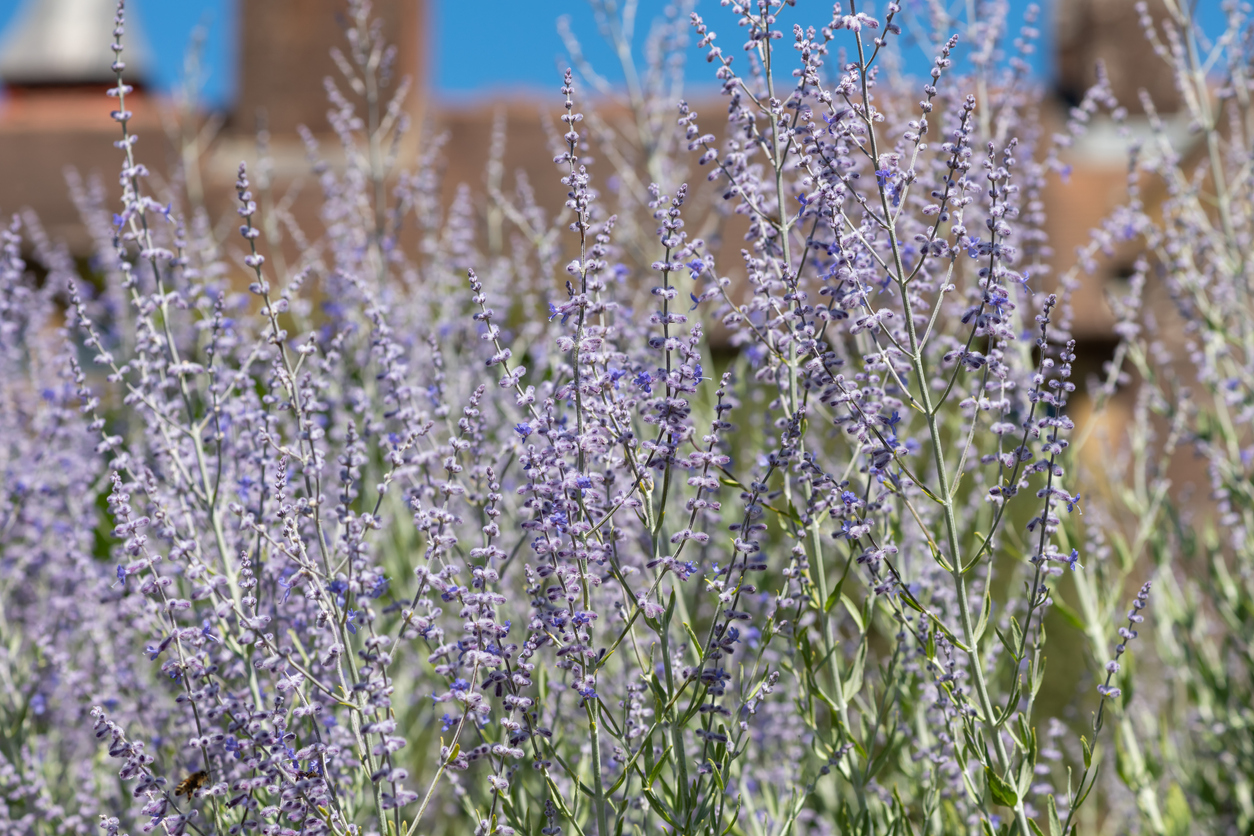
Russian sage is popular for its tall blue-violet flowers that bloom in the summer through the fall, attracting all sorts of pollinators to the garden. However, this shrub looks great in the winter, too, thanks to long silvery stems that offer structure and intrigue to a winter landscape. Hardy in zones 5 to 9, Russian sage is a great shrub to plant along walkways to maximize enjoyment of its fragrant flowers. Once established, it is a drought-tolerant shrub.
RELATED: 17 Deer-Resistant Plants, Flowers, and Shrubs
18. American Wintergreen (Gaultheria procumbens)
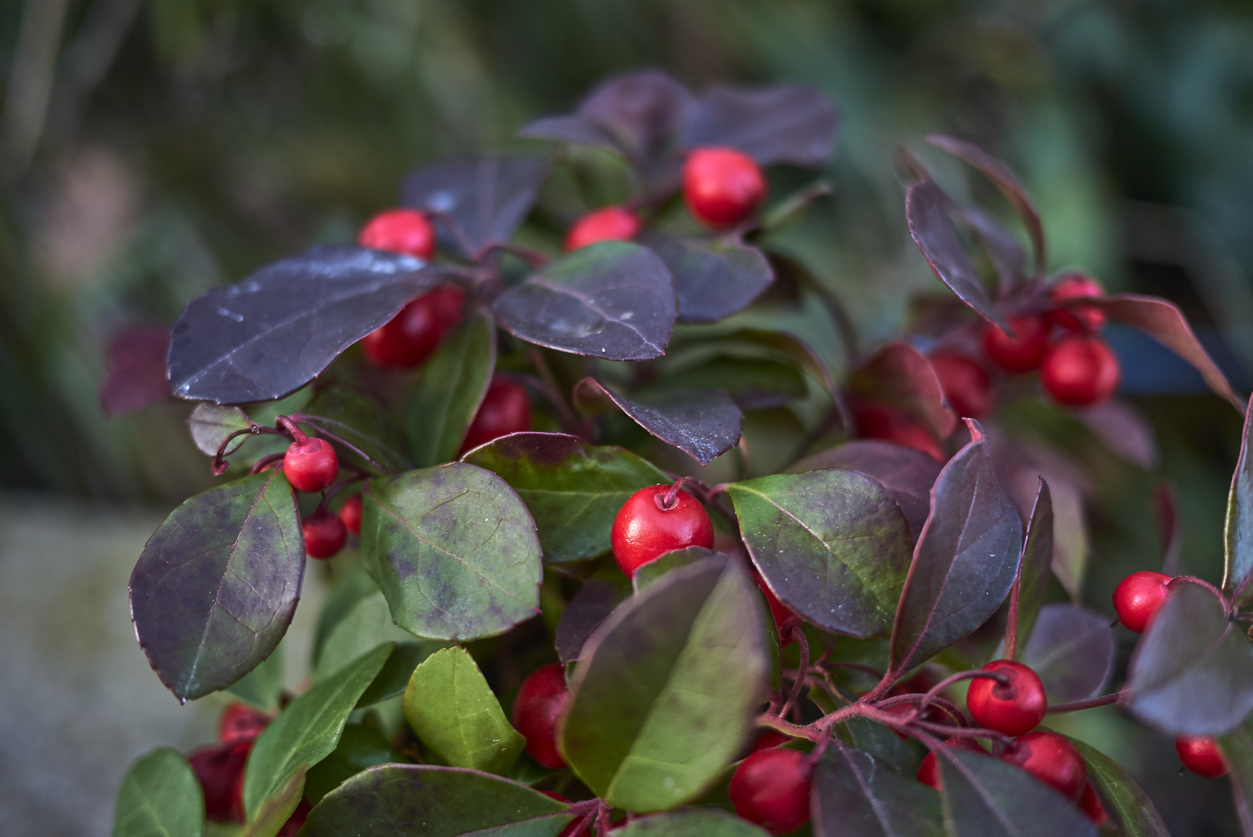
Also known as Eastern teaberry, American wintergreen features glossy evergreen leaves and bright red berries that will offer a beautiful contrast to a wintery white landscape. Like many winter outdoor plants, this shrub helps small mammals and birds who love the berries. It is disease-resistant, and crushing its leaves will release a refreshing wintergreen scent. Plant it in zones 3 to 7 to keep it happy.
19. Soapweed Yucca (Yucca glauca)

Hardy in zones 4 through 8, yucca glauca is among the most winter-hardy yucca varieties. Its attractive evergreen foliage features long narrow stems in a rosette shape that look great all year long. In the spring, a stem rises from the rosette that features white bell-shaped flowers. These flowers attract butterflies, and the entire plant provides food and nesting opportunities for small mammals, birds, and reptiles.
RELATED: This Yucca Plant Care Routine will Yield Tall Canes with Minimal Effort
20. Bearberry (Cotoneaster dammeri)

The low-growing bearberry shrub features glossy dark green leaves that turn bronze in the fall, persisting through the winter. During the winter you’ll also be treated to the shrub’s remaining vivid red berries, providing a valuable food source for birds. The berries give way to tiny white flowers in the spring and summer, which butterflies love. Plant it in zones 5 to 8 with full sun to watch it thrive.
